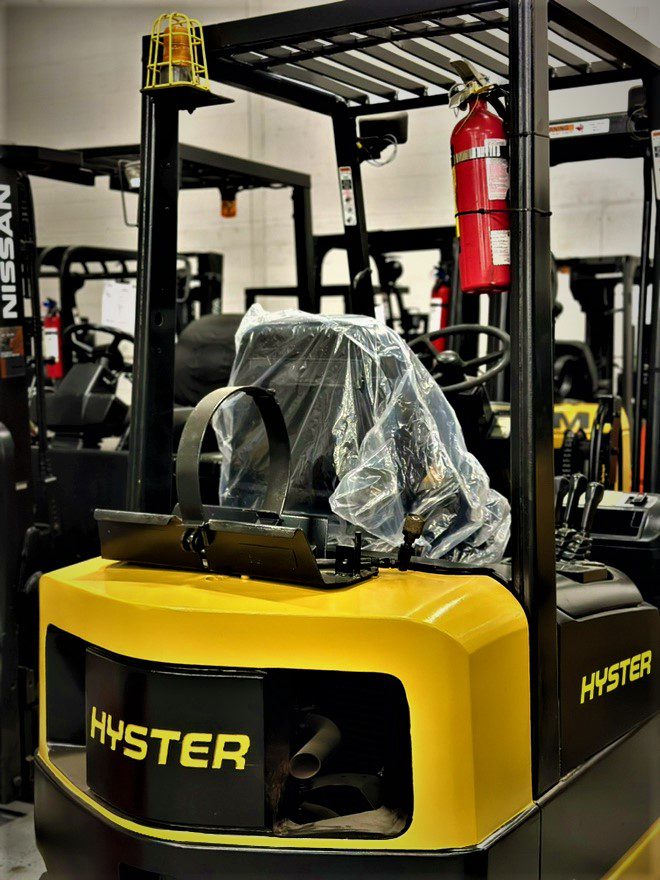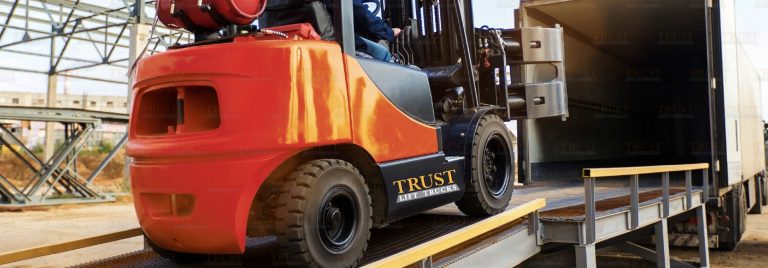Understanding Forklift Controls: Mastering the Three Key Components
Introduction:
Forklifts are powerful machines used for efficient material handling in various industries. Operating a forklift requires skill and knowledge of its controls. Understanding and mastering these controls are essential for safe and effective operation. In this section, we will explore the three primary controls found on forklifts, explaining their functions and how to utilize them correctly.
The steering control allows operators to maneuver the forklift and navigate through tight spaces with precision. Depending on the forklift type, steering controls can be found in two forms:
Steering Wheel: Commonly used in counterbalance forklifts, the steering wheel operates similarly to a car’s steering wheel. Operators turn the wheel to the left or right to change the forklift’s direction. It’s important to remember that sharp turns should be performed slowly to maintain stability.
Tiller/Control Lever: This control is typically found in electric pallet jacks and reach trucks. The tiller or control lever is a handle positioned at the rear of the forklift. By pushing or pulling the handle, operators can direct the forklift’s movements. When using the tiller control, operators must pay attention to their surroundings and maintain a firm grip to ensure smooth and accurate steering.
Regardless of the type of forklift with different steering control, operators must practice cautious and gradual steering movements, especially when handling heavy loads or operating in confined spaces. Proper steering control usage enhances safety and minimizes the risk of accidents.

The lift and lower control are responsible for raising and lowering the forklift’s forks or mast. This control enables operators to handle loads efficiently and position them at the desired height. The lift and lower control generally take two forms:
Lift/Lower Lever or Joystick: In many forklifts, a lever or joystick is used to control the vertical movement of the forks or mast. By pushing the lever or joystick forward, the forks or mast ascend, raising the load. Pulling the lever or joystick backward initiates the lowering action. Operators should maintain a steady hand while operating the control to ensure precise and controlled movements.
Lift/Lower Buttons: Some forklift models have lift and lower buttons instead of a lever or joystick. These buttons are typically located on the forklift’s control panel. Operators press the designated lift button to raise the forks or mast and the lower button to lower them. It’s important to avoid sudden movements and allow the forks or mast to descend smoothly to prevent load instability or damage.
Proper utilization of the lift and lower control is crucial to safely handle loads, especially when dealing with fragile or delicate materials. Operators must be familiar with the weight capacity of their forklift and avoid overloading it to maintain stability and prevent accidents.
The accelerator and brake controls govern the forklift’s speed and stopping power. These controls enable operators to move the forklift smoothly and halt it promptly when necessary. The accelerator and brake controls can be operated in the following ways:
Gas Pedal/Accelerator: Similar to a car’s gas pedal, the accelerator controls the forklift’s speed. By gradually pressing the pedal, the forklift gains momentum. Operators must apply the accelerator smoothly to avoid sudden starts or jerky movements that could compromise load stability.
Brake Pedal: The brake pedal is used to stop or slow down the forklift. Depressing the brake pedal gradually brings the forklift to a stop. Operators should avoid sudden or excessive braking, as it may cause loads to shift or tip over. It is crucial to be mindful of the forklift’s momentum and adjust the braking distance accordingly.
Mastery of the accelerator and brake controls ensures safe and controlled movement, preventing collisions and accidents within the operating environment.

Conclusion
Trust Lift Trucks is the trusted choice for all your forklift needs. Whether you’re looking to purchase a new forklift, rent one for a specific project, or require expert repairs and maintenance, our comprehensive services have you covered. Our commitment to quality, reliability, and customer satisfaction sets us apart in the industry.
Understanding and mastering the three primary controls on a forklift—steering control, lift and lower control, and accelerator and brake controls—are vital for safe and efficient operation. By familiarizing yourself with these controls and adhering to proper usage techniques, you can enhance productivity, minimize risks, and maintain a secure work environment. Remember, regular training and adherence to safety protocols are key to becoming a skilled forklift operator.
Precision
All measures of Safety are always one of our priorities to achieve a safe environment for our customer’s facilities. Zero tolerance of safety limits is our goal to inspect the customer’s forklift.
Study
Our staff and techs always have access to all necessary documents and continuous knowledge improvements always are our mission.
No delay
We do our best to limit our customer’s forklifts to increase their productibility by continuous mechanized PM and planes for predictive maintenance.